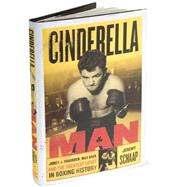
What is included with this book?
| Preface | viii | ||||
|
1 | (16) | |||
|
17 | (20) | |||
|
37 | (10) | |||
|
47 | (18) | |||
|
65 | (28) | |||
|
93 | (12) | |||
|
105 | (29) | |||
|
134 | (10) | |||
|
144 | (14) | |||
| 10. On the Waterfront | 158 | (8) | |||
| 11. Last One Up's a Sissy | 166 | (21) | |||
| 12. Another Upset | 187 | (8) | |||
| 13. King Max | 195 | (6) | |||
| 14. A Shot at Lasky | 201 | (5) | |||
| 15. The People's Choice | 206 | (15) | |||
| 16. Homicide Hall | 221 | (24) | |||
| 17. A Stout Heart | 245 | (22) | |||
| Epilogue | 267 | (12) | |||
| Appendix A: The Heavyweight Championship | 279 | (2) | |||
| Appendix B: James J. Braddock's Ring Record | 281 | (3) | |||
| Appendix C: Max Baer's Ring Record | 284 | (3) | |||
| Notes | 287 | (18) | |||
| Acknowledgments | 305 | (4) | |||
| Index | 309 |
The New copy of this book will include any supplemental materials advertised. Please check the title of the book to determine if it should include any access cards, study guides, lab manuals, CDs, etc.
The Used, Rental and eBook copies of this book are not guaranteed to include any supplemental materials. Typically, only the book itself is included. This is true even if the title states it includes any access cards, study guides, lab manuals, CDs, etc.
Excerpted from Cinderella Man: James J. Braddock, Max Baer, and the Greatest Upset in Boxing History by Jeremy Schaap
All rights reserved by the original copyright owners. Excerpts are provided for display purposes only and may not be reproduced, reprinted or distributed without the written permission of the publisher.